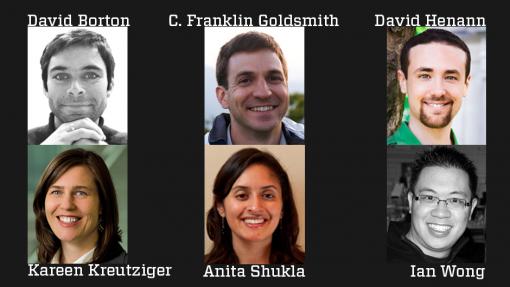
“The distribution [of orally delivered protein-based medicines] in the body can be somehow controlled with the type of polymer that you use.”
Credit: Mike Cohea/Brown University
PROVIDENCE, R.I. [Brown University] — As part of an ongoing expansion, Brown University's School of Engineering will welcome six new faculty members this year. The new hires bring the engineering faculty to 49, with more to be added in the coming years.
In April, Brown announced gifts totaling $44 million to the School of Engineering, kicking off a $160-million campaign to support the school's growth. Expansion plans include new teaching and research space to be built on College Hill and the addition of new faculty. The newest additions include three in biomedical engineering, one in neuroengineering, one in chemical engineering and one in solid mechanics.
"One of our priorities in growing engineering at Brown is to recruit world-class scholars to join our faculty," said Larry Larson, dean of the School of Engineering. "This new group of young faculty members is a reflection of that effort. They are all doing important and impactful research at the cutting edge of their disciplines. They will be fantastic additions to the scholarly community here at Brown, and we're very pleased to welcome them."
David Borton is currently a Marie Curie postdoctoral fellow at the Swiss National Institute of Technology in Switzerland. He leads a team of engineers, neuroscientists, and mathematicians creating and implementing state-of-the-art neural interfaces and kinematic sensors for the study of Parkinson's disease and potential therapies for spinal cord injury. His work is multidisciplinary, characteristic of Brown's brain science and neuroengineering community, and directed toward fundamental research, novel brain science, and translation of novel engineering design to clinical therapy. Borton received his B.S. in biomedical engineering from Washington University in St. Louis in 2006 and his Ph.D. from Brown in 2012.
C. Franklin Goldsmith studies the chemistry of combustion. He uses theoretical and experimental techniques to determine the rate at which important chemical reactions occur in oxidation and pyrolysis processes. A better understanding of these reactions will help in the development of combustion devices that maximize efficiency and minimize unwanted pollutants. Goldsmith holds undergraduate degrees in philosophy, mathematics and chemical engineering, and a Ph.D. in chemical engineering from MIT. He spent two years as an Alexander von Humboldt Postdoctoral Fellow at the Fritz-Haber Institute in Germany and is currently a Director's Fellow at Argonne National Laboratory.
David Henann studies the mechanics of amorphous, or disordered, materials, such as granular media and glassy solids. Granular flows, such as those through a silo, are important in many industrial applications, but predicting their behavior is difficult and complex. Henann is first author on a recent paper in the Proceedings of the National Academy of Sciences describing a 3-D model of granular flows that could help optimize industrial processes. He is currently a joint postdoctoral associate in Harvard's School of Engineering and Applied Sciences and MIT's Department of Mechanical Engineering. He earned a master's and Ph.D., both in mechanical engineering, from MIT.
Kareen Kreutziger is a bioengineer specializing in cardiac tissue engineering, muscle mechanics, stem cell biology, and regenerative medicine. Her current focus is using human pluripotent stem cells to engineer tissue that mimics human heart tissue in structure and function, with the goal of developing regenerative therapies for ischemic heart disease. She received a B.S. degree in biomedical engineering from the University of Rochester in 2001; a Ph.D. degree in bioengineering from the University of Washington in 2007; and postdoctoral training in pathology at the University of Washington.
Anita Shukla, a native Rhode Islander, is currently an NIH Ruth Kirschstein postdoctoral fellow in the Department of Bioengineering at Rice University. Shukla's postdoctoral research focuses on developing biologically inspired micropatterned surfaces to direct stem cell differentiation. At Brown, Shukla's research group will design innovative biomaterials for applications in drug delivery and regenerative medicine. She received a B.S. in chemical engineering and biomedical engineering from Carnegie Mellon University in 2006, an M.S. in chemical engineering practice from MIT in 2008, and a Ph.D. in chemical engineering from MIT in 2011 as an NSF Graduate Research Fellow.
Ian Wong's research program will focus on engineering new technologies to study how cancer cells invade and resist therapeutic treatments. He is particularly interested in understanding how materials and mechanical aspects of the tumor microenvironment regulate malignant behavior. Wong is currently a Damon Runyon Cancer Research Fellow at Massachusetts General Hospital and Harvard Medical School. He received his Ph.D. in materials science and engineering as an NSF Graduate Fellow at Stanford University.
- by Kevin Stacey